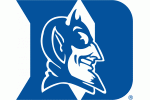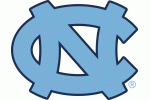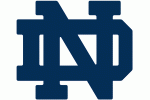Back in 2024, EA Sports released its College Football 25 video game, clearly its most ambitious release in the series yet. The company used AI to create the likenesses of 11,000 players and recreate 150 stadiums, covering every aspect across the spectrum of US college sports. It was a remarkable achievement, with EA admitting it would not be possible without the use of AI.
/cdn.vox-cdn.com/uploads/chorus_asset/file/22345264/GettyImages_1209442259.jpg)
It is interesting to note, however, that AI doesn’t just magic up these likenesses out of thin air. It requires vast amounts of data to pull off such a feat. As the technology becomes more and more entrenched in sports, including college sports, it is becoming more apparent just how valuable sports data is. Moreover, it will become a challenge for those data providers to maintain their business models.
Sports data collection has a vibrant ecosystem
There is, of course, a healthy market in sports data sales. Brokers like Sportradar, Stats Perform, and Genius Sports are able to sell ‘packages’ of data to online betting platforms, DFS sites, and even game developers like EA. Conceivably, they can also sell to AI companies, which some already do.
And yet, there are fears that AI will eventually usurp the data providers, cutting out the middleman, so to speak. A lot of the really good data is behind paywalls, but some of it isn’t. It is available online, although not packaged in a way that the average sports fan can easily navigate and make sense of it all; AI can, and that could be an issue, especially if, as has been suggested, AI is not playing by the rules of access.
The important thing to stress is that data providers should be recognized for the work they undertake to collect all this valuable information about sports. If you are a college sports fan, you will be well aware of what an undertaking that is: 134 teams competing across the FBS, for instance, with up to 105 players on each roster. It is a titanic challenge to compile everything, package it, and make it into an asset.
A question of ownership
Yet an important question to ask is based on the definition of who owns and who should own that data. While data aggregators rightly expect compensation for the infrastructure and manpower involved in collecting data, the raw information they work with, such as player stats and play-by-play records, often originates in the public domain.
This blurring of boundaries is only exacerbated by the rise of AI ncaagamesim.com. Large language models (LLMs), computer vision tools, and predictive tools can now scrape and model public sports data at a scale that was previously unthinkable, even just a year ago. That raises the question of what happens when AI can mimic the very product these providers sell.
We may not be far from the point where an AI system could analyze freely available play footage without accessing a data feed, basically watching footage of a game and compiling the data. If the core product of sports data companies becomes useless or secondary to AI, their competitive advantage could be eroded overnight. Ultimately, as sports data becomes increasingly integral to everything from fan engagement to athlete performance analytics, its value will only rise.
But who will be paid, and who will pay for access to that data? Will you need an AI subscription before engaging in sports betting, fantasy sports, or making predictions on sites like NCAA Game Sim? It feels like we are on the verge of a significant shift in how sports data is utilized and who can access it, and it’s not quite clear if it will be ultimately beneficial.



















